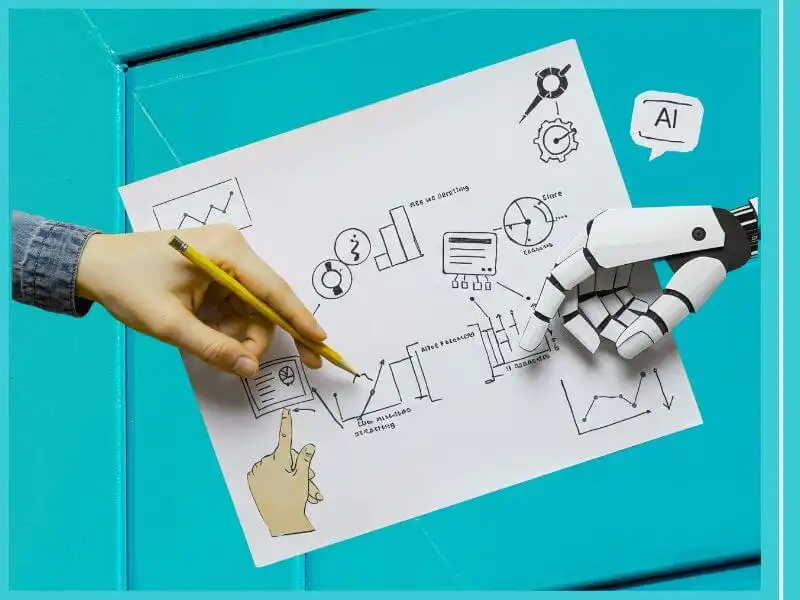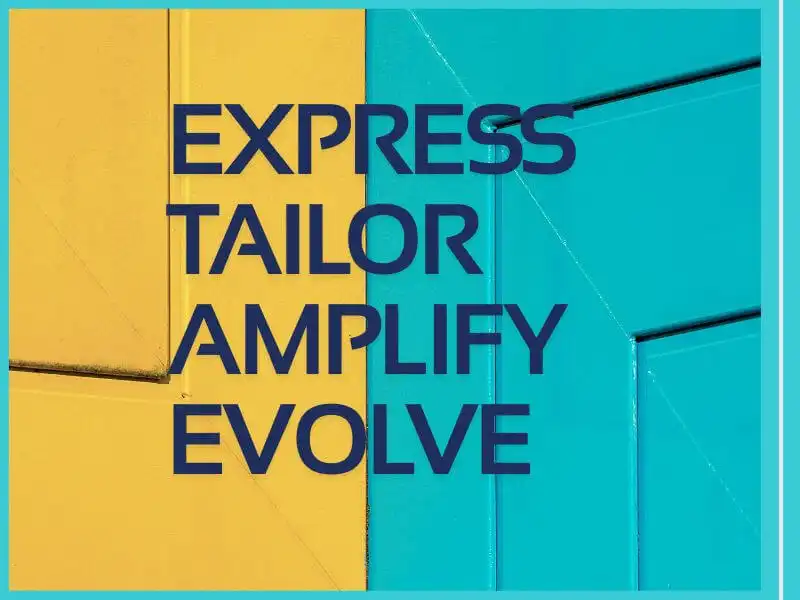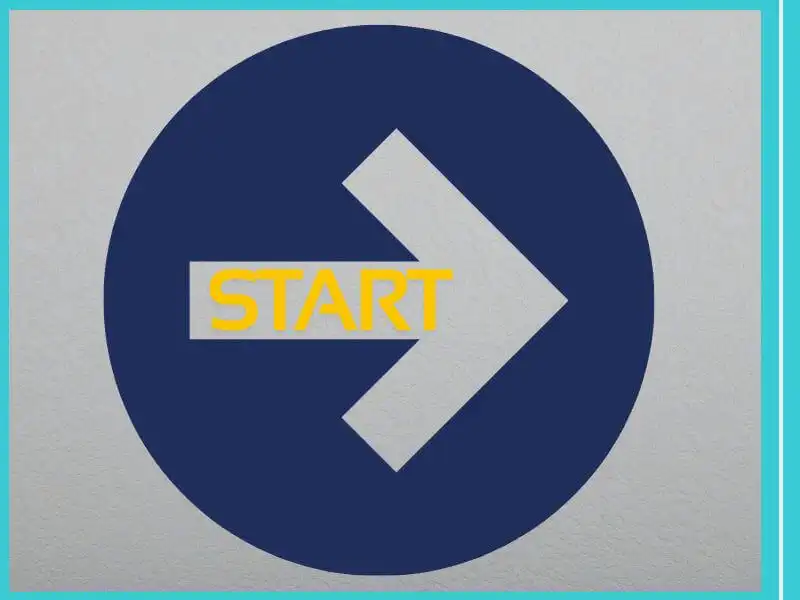
- 25.11.2025.
- News, Management
The latest article by Andreja Fazlić for čarter.hr offers an honest view of the most important, yet often overlooked dimension of digital transformation – the human. Andreja reminds us that without personal growth from the leader, no strategy can succeed in the long run. If you’re serious about growing in 2026, this is a text you need to read.
The time of year is approaching when it’s common to turn around and look back. Questions like: what have we done, what haven’t we, what have we learned, what have we missed... naturally arise, as does the reflection on where we could do better, especially in the coming year.
In the previous article, I wrote about innovations presented at HubSpot’s INBOUND in September. If you read it, you know that experience deeply inspired me, deepened my insights and strengthened my mission to make digital transformation projects more human.
If you read it, you also know that I posed an open question to all leaders – the technology is here, but will you know how to use it to grow your business?
Shortly after submitting that article to the editorial team at čarter.hr, I held a lecture at VRM Days titled “Why AI won’t make your digital transformation successful, but personal development might.”
Today, I’m taking it a step further, because that question is rhetorical, and below I’m sharing selected insights from that lecture.

Let’s first remind ourselves of what is already known
The reality of digital transformations is dire, and the main reason is the neglect of the fact that it’s not just a matter of technology, but above all, a matter of people and psychology.
Among my LinkedIn contacts is Andrijana Musura Gabor, Ph.D., who approaches this topic from a scientific perspective. She says: “To align AI with how people actually think and work, leaders must apply an approach based on behavioral science and principles of change management. The core of it is that the success of AI adoption depends not so much on introducing the most sophisticated and advanced technology, but above all on the leader’s decisions infused with insights from behavioral science – about human flaws, biases, and habits – throughout the entire cycle of change: from design phase, through adoption, to day-to-day management of that process.”
Simply put – technology changes quickly, and people change slowly. Most of us find it hard to accept change because we love routine, security, and a familiar environment. We often perceive change as a threat or a source of stress, even when it’s good for us. Fear of the unknown, loss of control, or the feeling that we won’t be good enough at something new are some of the most common reasons why change is difficult to accept.
If you are a leader guiding a team through digital transformation, it is important to remember that technology is just a tool. Real change only happens when people adopt new ways of working. Your role is to understand their process and provide them with support.

Statistics confirm that between 65 and 88 percent of digital transformation projects, including those with CRM systems, do not deliver satisfactory results. The most common reasons are the lack of clearly defined goals and direction, or the absence of a strategy, an excessive focus on the technologies themselves instead of the actual needs of users, as well as the mistaken understanding of CRM as “just software” instead of part of a broader business strategy.
One of the main problems is also user resistance, which often arises because they are not sufficiently involved in the process design. Additionally, complicated systems and fear of losing control or taking on extra work make it harder to accept change. When users do not see the value of CRM or it does not suit them, they revert to old habits, which reduces the effectiveness of the project.
Problems become greater if the CRM is not well connected to other tools, and if there is no continuous education and support for users or if leadership is not engaged in the process. Instead of making work easier and delivering value, the CRM often becomes just another place for data entry and a source of constant frustration.
On top of that, frequent challenges of excessive project scope expansion lead to disorganization, delays, rising costs, and declining motivation within the team.
It is not much different in our country!
What is specific to our market is that Croatians are not eager to learn new things. According to the National Strategic Framework for the Promotion of Lifelong Learning from 2024, only 3.5% (!!!) of adult Croatians (everyone aged 16–65) learned something new in the past month. Imagine that! The EU is at 11%, and by 2030 aims to raise that average to 60%.
Also take into account that 98% of all entrepreneurs in our country are micro and small businesses. “Why are we not competitive?” is also a rhetorical question.
You can buy the most expensive AI, implement the most modern CRM, hire the most famous or the most expensive consultants in the world – however, if you, as a leader, are not ready to change yourself, your habits and the way you work, nothing will happen.
Because digital transformation is not a project with a beginning and an end. It is a cultural shift. And software does not change culture. People change culture – first you, then your team.
Besides the success of the digital transformation project, your personal growth is also necessary because the customer himself has changed – and that person is irreplaceable for your revenue.

The evolution of the customer journey: What does it really mean to be “at the center” in 2026
The story of digital transformation is actually a story about how we are changing the way we look at people – both customers and employees. The biggest impression from this year’s INBOUND, through conversations with leaders and demos of new HubSpot models, was just how quickly the customer journey is changing. It is no longer just a series of marketing tactics. It is a strategic process in which your ability to adapt, learn, and connect with customers directly translates into growth and relevance.
Ever since 1898, when Elias St. Elmo Lewis created the first sales funnel, everything was linear: attention, interest, desire, action (AIDA). In that world, it was important to capture attention and finish with a successful sale. But in the digital era, the sales funnel is just the foundation. Modern customers don’t enter and then “fall out” of your funnel. They move from channel to channel, seeking interaction, emotion, meaningful connection, and information exactly when they need it.
HubSpot’s Flywheel model, introduced in 2018, brought a major shift because it stated – the purchase is not the end, but the beginning. Attract, engage, delight – that has been the mantra in recent years. Why? Because delighted customers are ambassadors, they return more often and spread recommendations. Energy is not lost but amplified, and the digital strategy becomes an organic cycle.
The Loop model, introduced at INBOUND 2025, sealed a new era of business and presented four phases that systematically connect all points of the customer journey.
- Express (Express the brand): clear definition of brand identity and style (!) as a platform for communication.
- Tailor (Tailor the message and experience): hyper-personalization of messages based on available data and supported by AI.
- Amplify (Amplify presence): content distribution through various channels to reach customers exactly where they are.
- Evolve (Evolve and optimize): continuous measurement and adjustment with the help of AI, where the speed of change is crucial for competitiveness.
This model creates a continuous loop of adaptation and learning, where each phase – from clear, authentic communication to personalization and meaningful use of data – builds and returns profitable value to our system.
These three models – funnel, flywheel, and loop – actually tell the same story. Each version is simply more mature. They tell the story of people who want to understand other people. Of organizations that want to become living systems and act with purpose, not just be machines that sell.
And that is precisely why I deeply believe that real human experience – and especially excellent human experience – will become the currency of the future. Customers will be willing to pay more for it. They already are. Because authenticity, warmth, and human connection have no competition.
And if you are wondering whether you can achieve this on your own – of course you can – if you deeply understand the human being; both in the context of purchase and in the context of change. And if you still need support with that, feel free to reach out.
The balance of masculine and feminine principles
How can you understand the person in front of you if you do not understand yourself? How can you lead others if you do not know how to lead yourself?
It has been almost three months since INBOUND, and my impressions and insights are still intense and in the process of being sorted. And how could they not be, when I spent four days in one place with 12,000 people, all full of similar enthusiasm and passion for marketing and technological innovations.
It is impossible to resist that energy, and that is precisely what strengthened my intention to speak more clearly and loudly about:
- The importance of placing the human being at the center of strategy and all plans and activities during digital transformation projects; nowadays called human centric, and it refers to both customers and employees.
- The importance of a guided change process – you cannot leave things to chance, it is necessary to anticipate as many details as possible during the planning phase to ensure smooth execution.
- As well as the importance of continuous learning and adopting new ways of working – because technology will not work by itself and make your business more successful.
When I talk about the balance of masculine and feminine principles in the context of management and leadership, I am not talking about gender! I am talking about archetypes, about energy, about principles, about the way you lead. If it is more comfortable for you, you can call them “soft” and “hard” skills – that is already well known.
The old paradigm is structure without empathy: rigid but predictable. The new paradigm requires fluidity, relationship, and acknowledgment of the need for continuous learning and adaptation.
Only a leader who builds that balance within themselves – enough structure for consistency and enough empathy for trust – can lead true (and lasting) transformation.
Such balance does not come from the outside, but from within. From ourselves, and its source is called emotional intelligence. Because before all infrastructure, new tools, and technologies, you as a leader simply must be ready to:
- Get to know yourself, your emotions, and your key points of resistance.
- Get to know others, learn to listen and understand the fears of your team members.
- Establish relationships and a culture in which people want to learn and grow.
Without that, no implementation will result in long-term growth, and your digital transformation will remain a “paper initiative.” And as it usually goes “in the human way” – someone else will likely be blamed for it.

I wish for you to choose to act differently in 2026
When you think about the upcoming season, consider – how ready are you, and then your team (because it reflects you), to learn quickly, adapt, and build relationships throughout the entire customer journey? How ready are you to integrate new technologies, but even more so, to invest in your own development?
Because it is precisely in that combination of human-centered technology, adaptive teams, and leaders who never stop learning that the difference lies between those who grow and those who wait for trends to happen. The difference between top performers and everyone else.
These are my final thoughts for this year. Let them inspire you not to wait for “ideal conditions,” but to start making changes today. Digital strategy, business transformation, and human development are not separate topics. And the biggest shift you can make in your business in 2026 is the one you choose to make within yourself.
Categories of trends
- News
- Sale
- Marketing
- SEO
- Web design
- Social media
- Technology
- Regulations
- Management
- Education
- Finances
- User experience
Newsletter
Sign up for the newsletter and receive the latest trends and tips straight to your inbox





